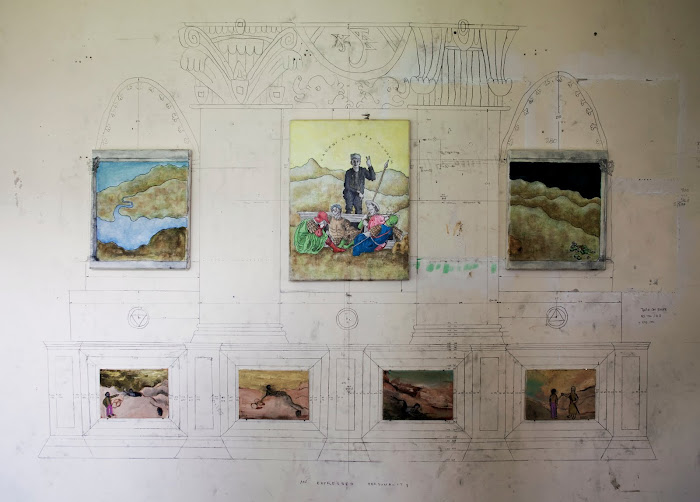I was very disappointed with Cave of forgotten dreams. I went twice.
I think the problem was that it was consciously made for middle America. If you consider your audience to be morons, the work you make will be moronic. That seems axiomatic to me.
As well as looking at the nice pictures, I wanted to know how they were made. Despite the film, I think I can reconstruct the process.
Let's say it is 35,000 years ago and you are a member of the world's second oldest profession. I think it more likely that you would travel around tribes and negotiate with the local shaman to exchange a painting for food and whatever other goods the tribe produces that you need. I doubt you would live permanently with the same tribe.
This is the same shaman who will, as soon as you leave, get the tribe fucked up on drugs and spray his stupid dots all over your nice composition.
You start by preparing your surface, by smoothing the cave wall, first with a stone adze and finishing with wet sand. You want the surface smooth and pale but not flat. You'll use the curves in the next stage.
The next stage is drawing the outline of your figures using charcoal and ad hoc perspective. You stand in the viewing spot and picture the finished figure on the wall in your mind. You draw the figure, stand back in the spot, and compare the drawing with the picture in your head.
You rub out half the figure and extend the lines further back around the curve.
Once you are satisfied, it is time to paint. You have pigments, a medium, and brushes. The pigments are from charcoal, clays, and plants. The medium is probably animal fat. No doubt you think that painting a representation of an animal using parts of that animal adds meaning and significance to that representation. The brushes are a mix of sticks with chewed ends and sticks with tufts of animal fur attached with leather and glue.
You also use the heat from your light source to help spread the paint.
25 August 2011
Subscribe to:
Post Comments (Atom)

No comments:
Post a Comment